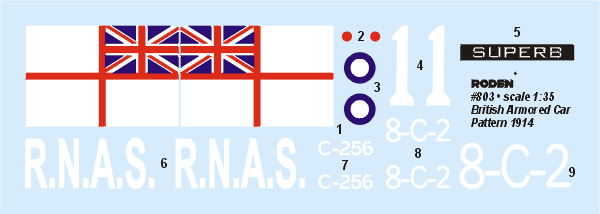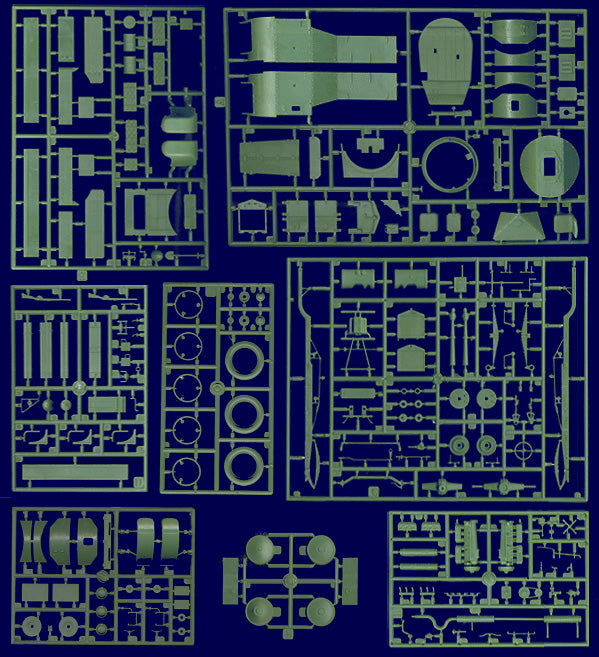Roden 1/48 Fairchild AU-23A Peacemaker ROD439
Roden 1/48 Fairchild AU-23A Peacemaker ROD439 will be backordered from our supplier. Delivery will take between 3-5 working days & orders will be despatched once completed.
Sign up to be the first to know when this product is back in stock!
Description
Description
In the following years the type gained great popularity. Apart from Switzerland, it was purchased for the needs of air arms in Austria, Argentina, Australia, and various countries in the Far East and Africa. The American aircraft manufacturer Fairchild was also interested in this aircraft and purchased a license in Switzerland for its production.
At this time the military of the United States of America, which was involved in its protracted war in Vietnam, announced a competition for a basic airplane whose primary function had to be supporting operations against partisans. However, the Vietnam campaign ran to its inevitable conclusion and America had to abandon the country, an example of the political conditions of the Cold War between the super powers which entailed permanent support of satellite countries in the world's conflict zones. Under the provisions of the military tests for the Credible program two types were chosen - the Fairchild Porter and the Helio Stallion. Comparative tests of the two types took place in 1971 at the Eglin Air Base after which the proposal of the Fairchild firm was chosen for further development.
The XM-197 gun was installed in the airplane, a lightened version of the M-61 Gatling gun. It was fitted to a mobile installation in the doors of the freight compartment of the fuselage, which permitted a wide field of fire. A row of pylons was mounted under the wings of the airplane, where various armaments could be suspended: 250 or 500 pound bombs, unguided rocket launchers, napalm containers, cluster munitions, flare dispensers, searchlights or psychological warfare equipment. It was envisaged that the regular crew of the AU-23A Peacemaker (the name officially bestowed on the type) would consist of two pilots and a gunner, however according to necessity it could carry six additional passengers, or five fully equipped infantrymen, or three wounded men attended by a paramedic. Taking into account the possibility of landing on and flying away from the smallest areas, it needed to be a flying “jeep”, adaptable and comfortable in any military situation on the battlefield.
Soon a new build airplane was sent to Vietnam to conduct military tests in combat conditions, according to the program of aviation development in support of Pave Coin troops. The airplane was intensively used in helicopter escort, combat against mobile partisan groups, and special service operations. In particular it was intensively tested in take off and landing on poorly prepared air strips while carrying various loads.
In total, during these tests the airplane executed about two hundred missions. Half of them were conducted by American pilots, the remainder by the USA's South Vietnamese allies. A notable defect of the airplane which caused much criticism was its considerable vulnerability to enemy small arms fire, even such ordinary Soviet machine guns as the DShK, which Vietcong soldiers had in great quantity. Additionally the aircraft appeared poor at managing quick upward flight with maximum load. Nevertheless, Fairchild received an order for a small series of 15 such airplanes. The order was fulfilled but the Vietnam War was already finished by then. In 1972 all 15 AU-23A machines were sent on to the Davis-Monthan Air Force Base. They could have stayed there forever, however soon after the USA and Thailand signed a mutual military aid agreement, and all 15 airplanes were delivered to this South East Asia country. They were widely used by the Thai military for many years, mainly in the task of border patrol.
Performances
Span 49ft8in
Length 36ft10in
Height 14ft4in
Wing area 309.6sq.ft
Weight, maximum gross 6,100lbs
Engine Garrett TPE 331-1-101F turboprop of 650hp
Maximum speed 148 knots
Combat cruising speed 129 knots
Range 420 nautical miles, combat radius 162 to 201
Crew Three
Loading
in transport configuration, the aircraft could carry six passengers or five troops with field gear or one litter patient, three ambulatory patients and one medical attendant
Armament
One XM-197 20mm side-firing cannon, side-firing XM-93 7.62mm minigun, XM-59 .50-cal. machine gun and XMU-470 20mm fixed side-firing gun.
Combat load
up to 1925 lbs. of external stores on five pylon, pods, napalm canister, CBU-55 500 lbs. MK-24 flares, ADU-272 canisters, smoke grenades and propaganda leaflet dispensers.
Specifications
Specifications
Payment & Security
Payment methods
Your payment information is processed securely. We do not store credit card details nor have access to your credit card information.






